ISLE OF SKYE
Click for larger photos.
Broadford
We arrived during the early evening of May 20 at the Dunollie Hotel in Broadford on the Isle of Skye (Inner Hebrides). This was to be the home base for our tours for the next two days. This was the first hotel which had no telephone in the rooms, and the manager had an occasion to inform us that his annual suggestion was for the owners to rectify that situation. Thankfully, he turned his office over to Doug and allowed him to check his website on the computer while awaiting a phonecall from our friend in Falkirk.

In 1746, Prince Charles Edward Stuart fled to the isle of Skye. There, he was given sanctuary by Captain John Mackinnon. After staying with the Captain, the prince rewarded him with the prized drink recipe for Drambuie. The original recipe was given in the late 19th century by Capt. MacKinnon to James Ross, who ran the Broadford Hotel on the Isle of Skye. James developed and improved the recipe (initially for his friends locally). It was one of these friends who coined the name, meaning "the drink that satisfies". Ross then sold it further afield even to France and the USA. It was Ross who patented it in London. Tragically he died young, and to pay for their children's education, his widow was obliged to sell the recipe, by coincidence to a different MacKinnon family, in the early 20th century. The Mackinnon family has been producing the drink ever since. The first commercial distribution of Drambuie in Edinburgh was in 1910. Only twelve cases were originally sold. In 1916, Drambuie became the first liqueur to be allowed in the cellars of the House of Lords, and Drambuie began to ship world wide to stationed British soldiers. In the 1980s, the producers of Drambuie began to advertise the liqueur.
MEMORIAL INSCRIPTION: Erected to/ the Memory of /James Ross/ Broadford, Skye/ by his/ Many Friends and/ Acquaintances/ as a Token of Their Esteem. 1845-1902
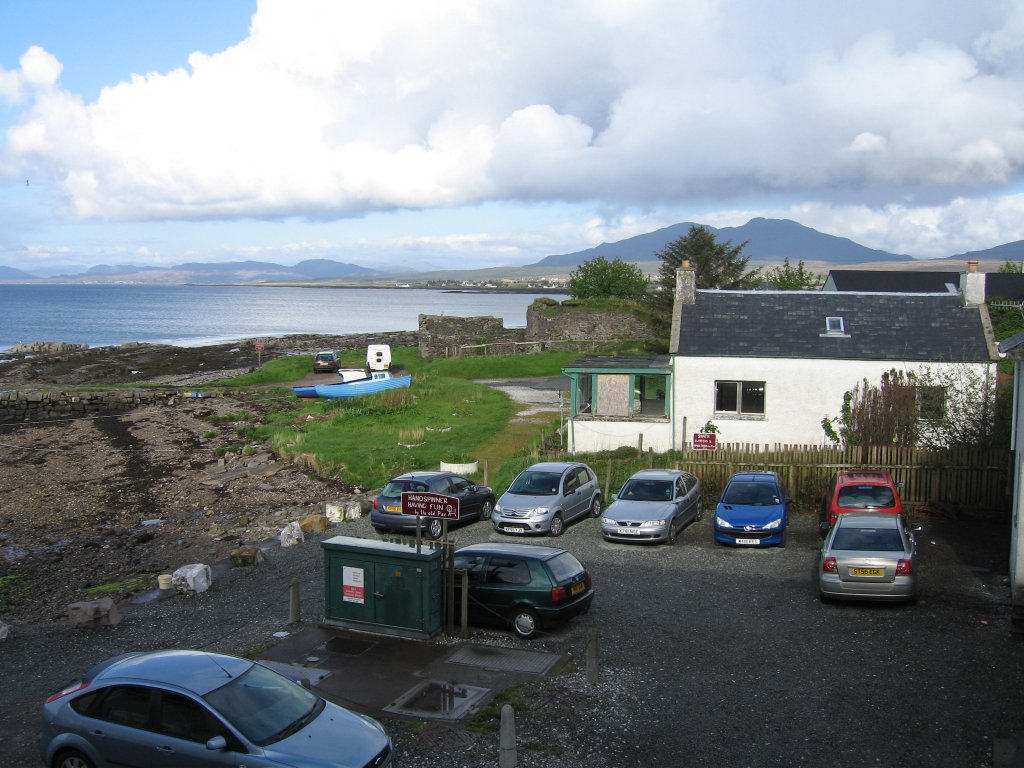

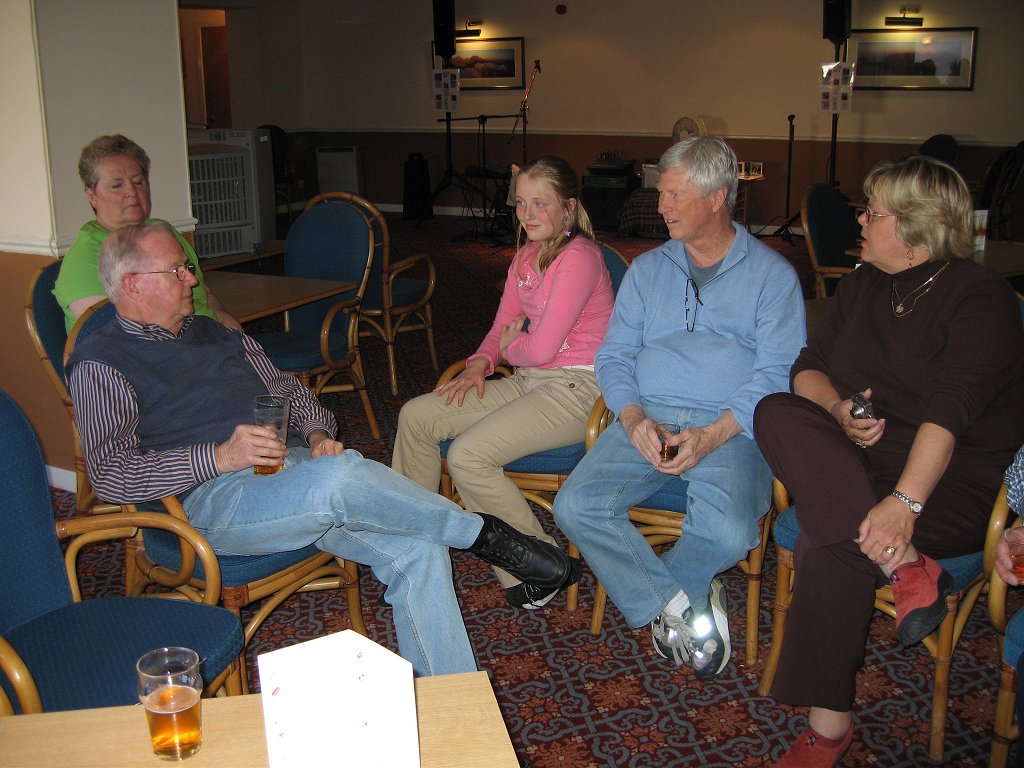
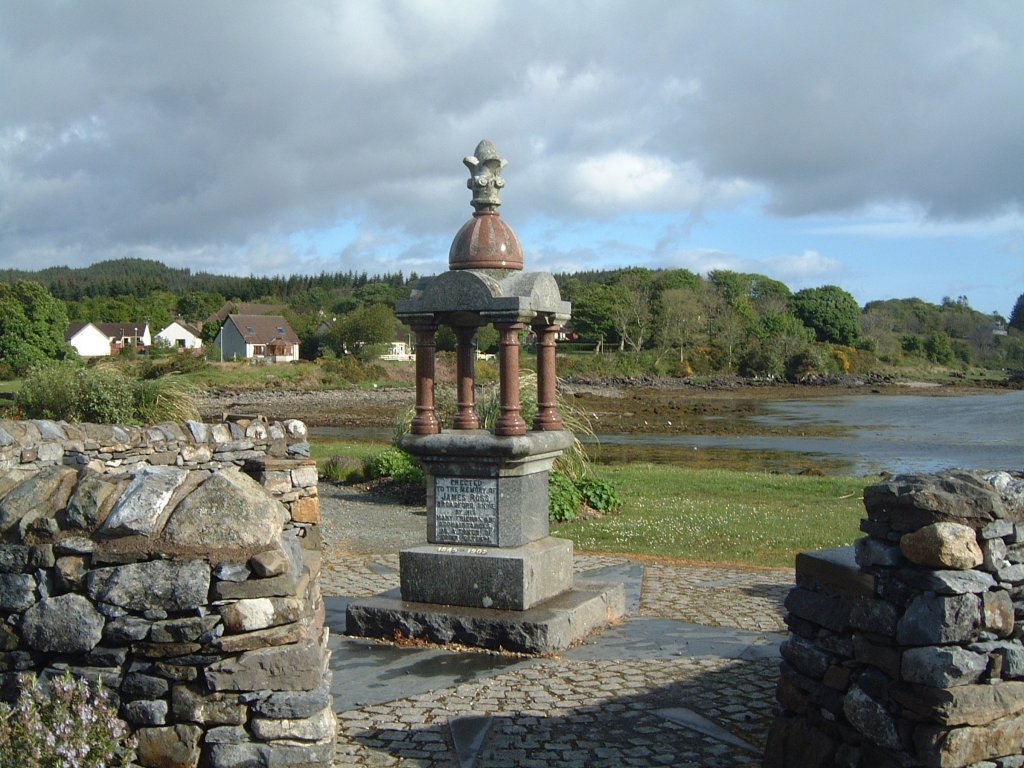

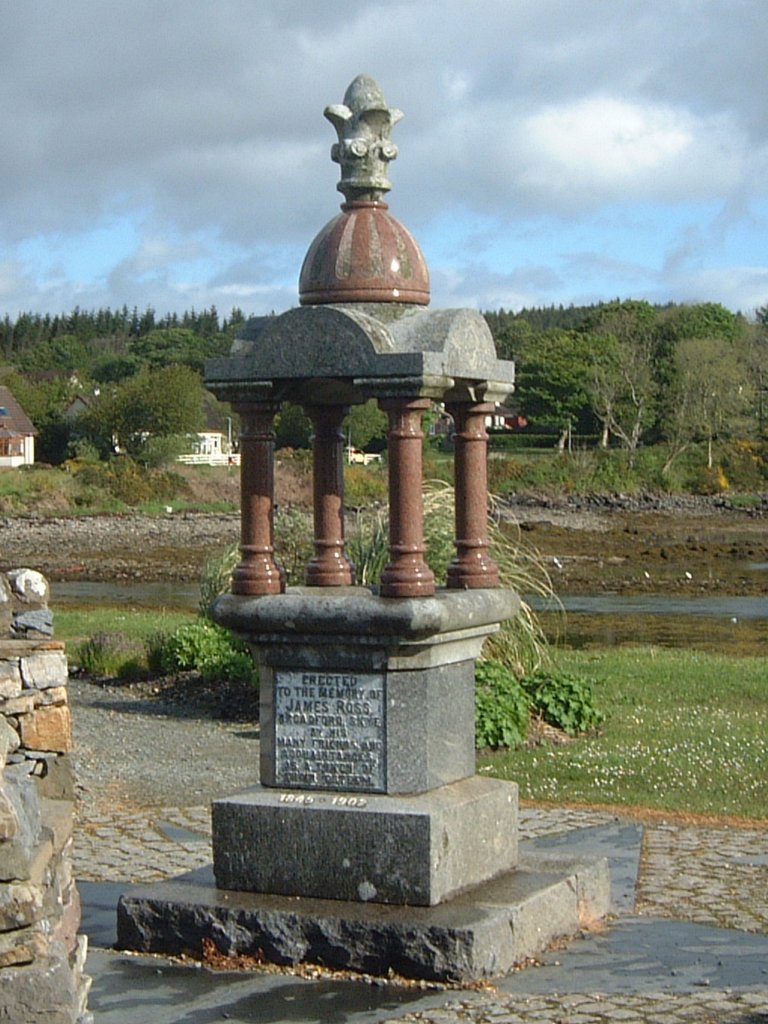
Portree

Early next morning, we explored the small island capital of Portree. The Gaelic, Port-an-Righ translates as "the King's Port" which dates back to a visit by James V in 1540. At an inn on Bank Street Bonnie Prince Charlie bade farewell for the last time in 1746 to Flora MacDonald, who had famously conveyed him "Over the Sea to Skye". The centre of activity in the wee town is Somerled Square (Cearnan Shomhairle) where a war memorial is located. The chief industry is fishing.
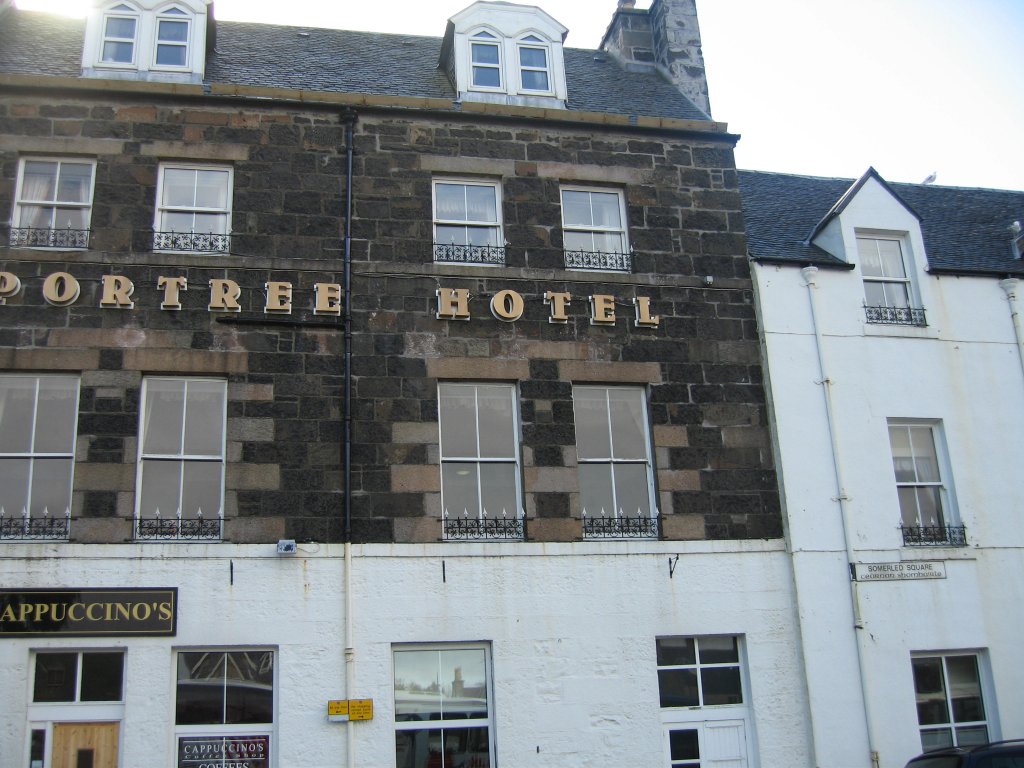

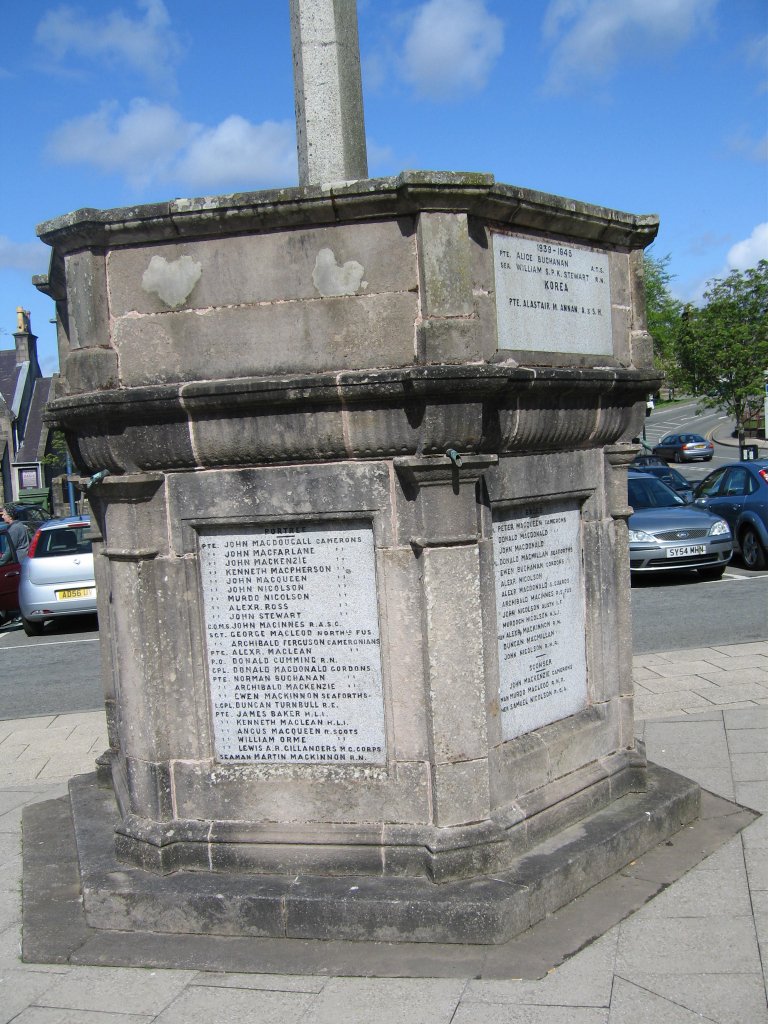

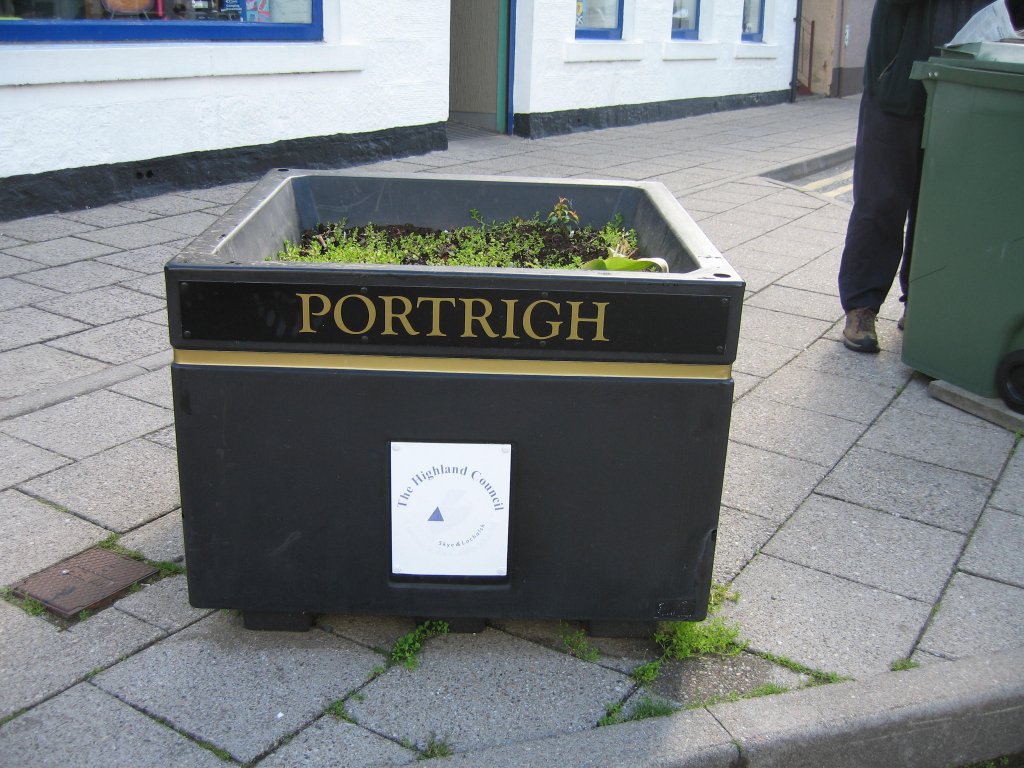
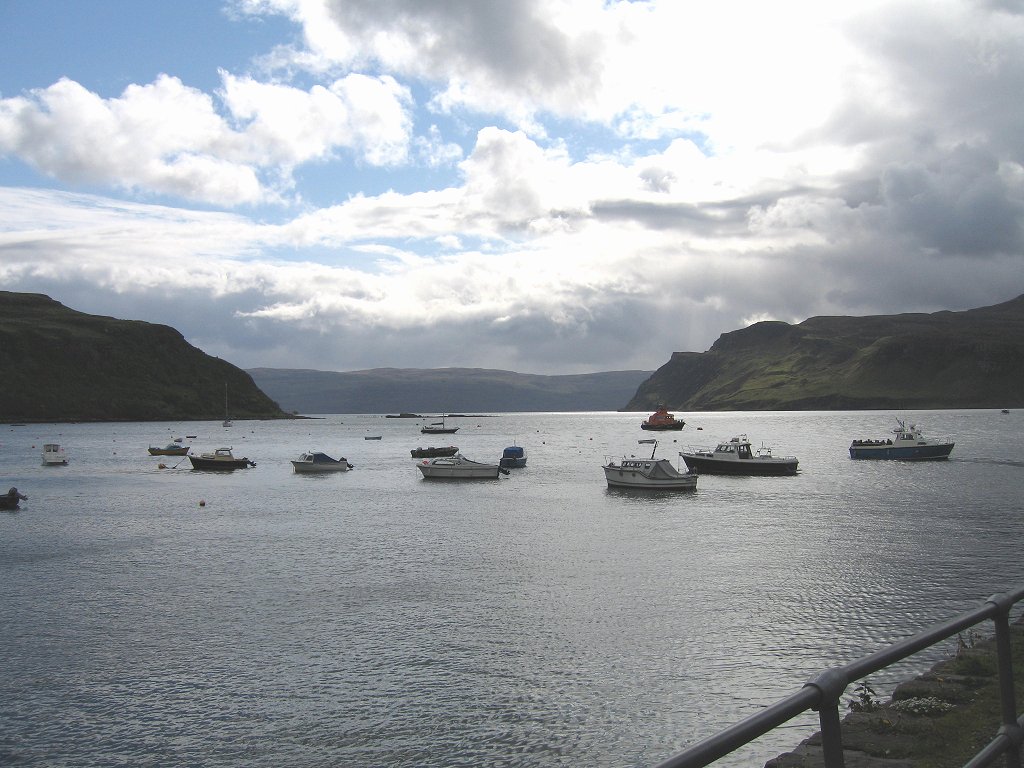

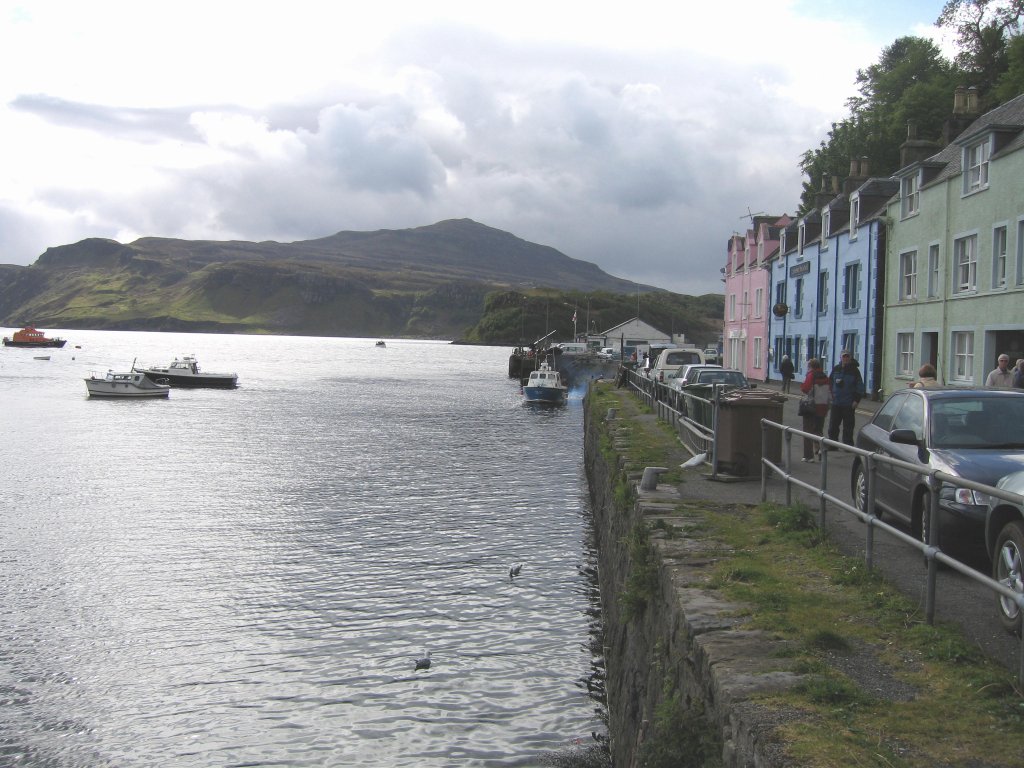

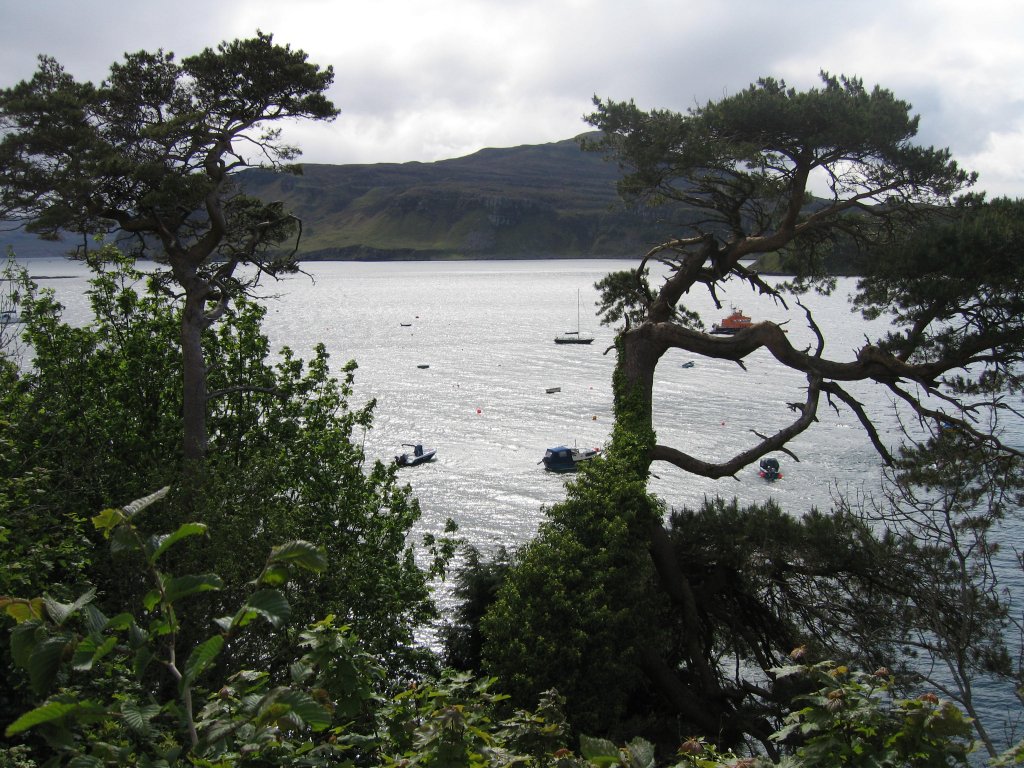

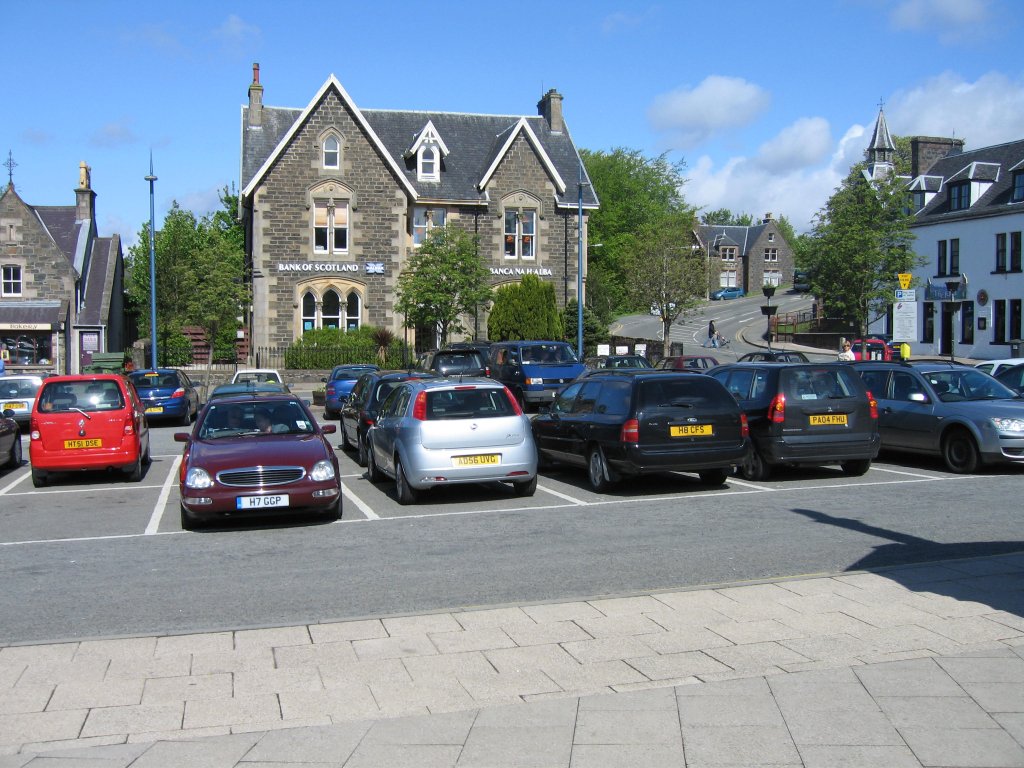
Dunvegan Castle & Gardens

Among the things that can be seen in Dunvegan Castle, 22 miles west of Portree, are the famous Fairy Flag and Rory Mor's horn.

Precious little remains of the Fairy Flag. [It looks like an old rag!] Legend has it that this sacred banner will bring success to the chief or his clan if unfurled in an emergency. [It is already flattened and framed under glass!] However, the charm will only work on three occasions and it has already been used twice to secure MacLeod victories in battle. The fabric, thought once to have been dyed yellow, is silk from the Middle East (Syria or Rhodes); experts have dated it between the 4th and 7th centuries A.D. Perhaps it was the war banner of Harold Hardrada, King of Norway, killed in 1066, as some believe.

Rory Mor's horn, a large horn, can hold two litres of claret, and every chief since Rory was expected to drink it down in one draught to prove his manhood.
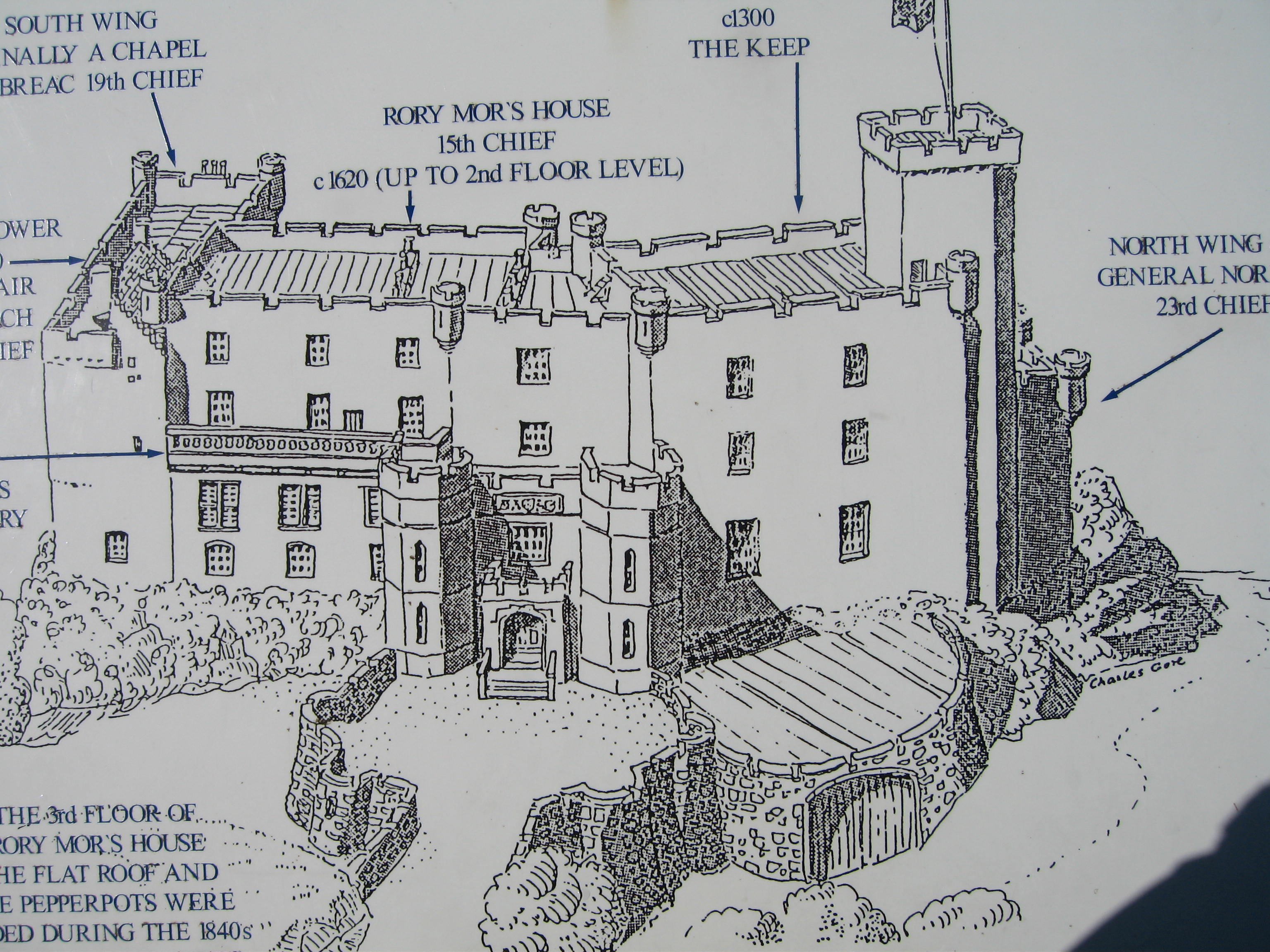

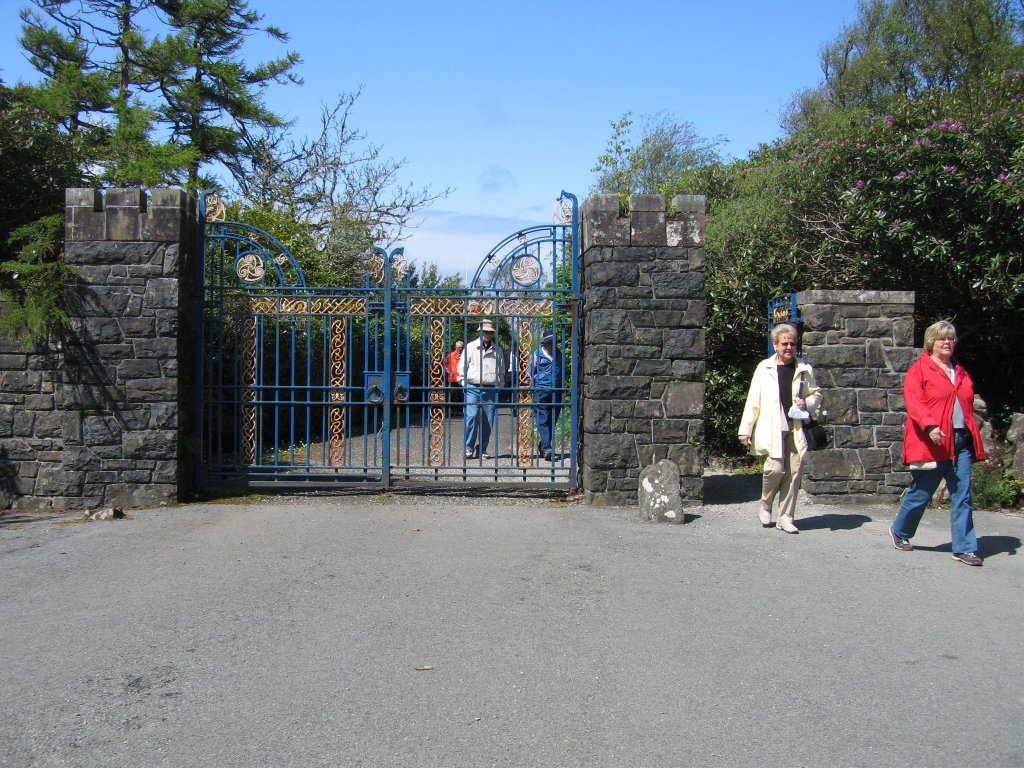
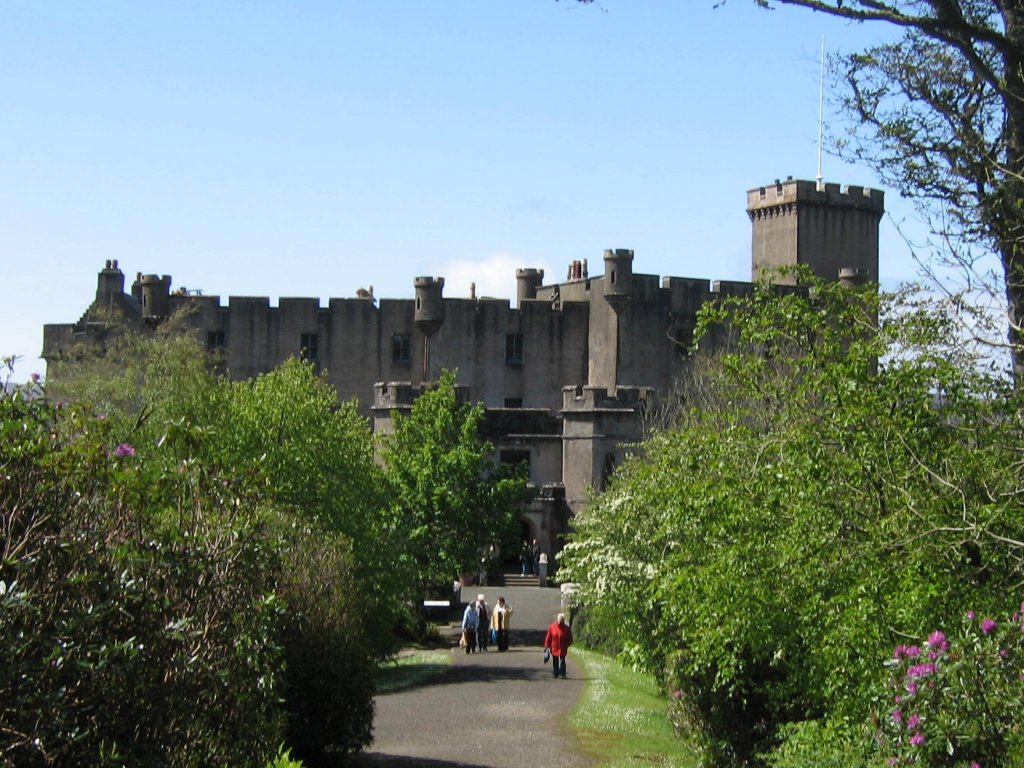

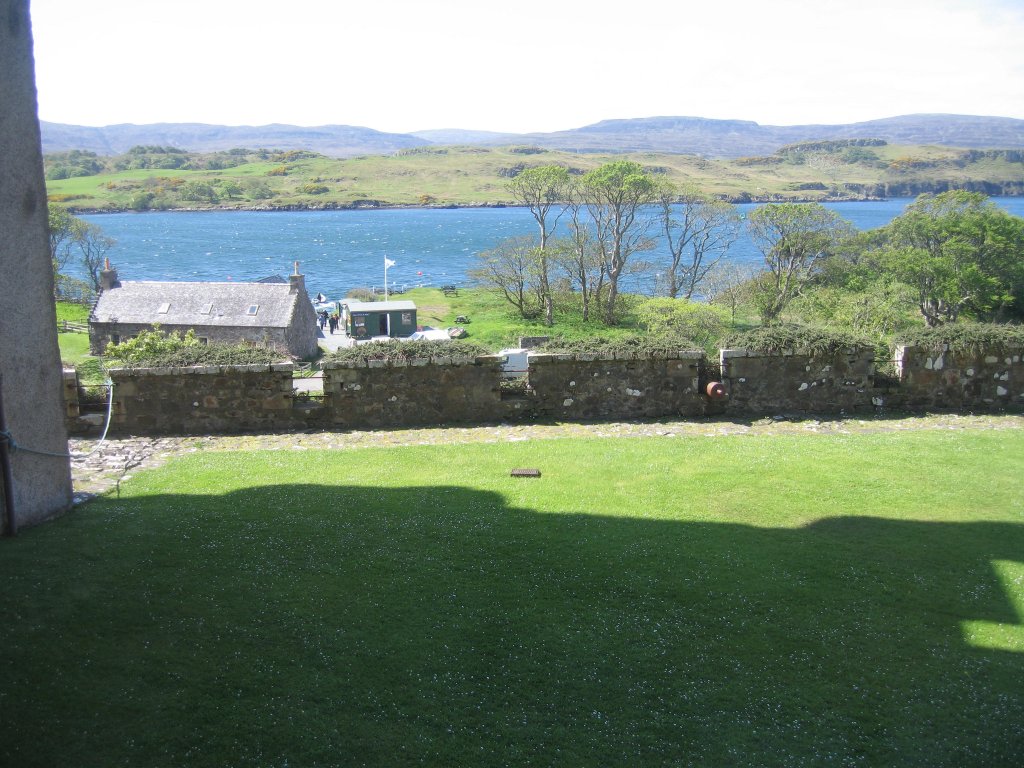

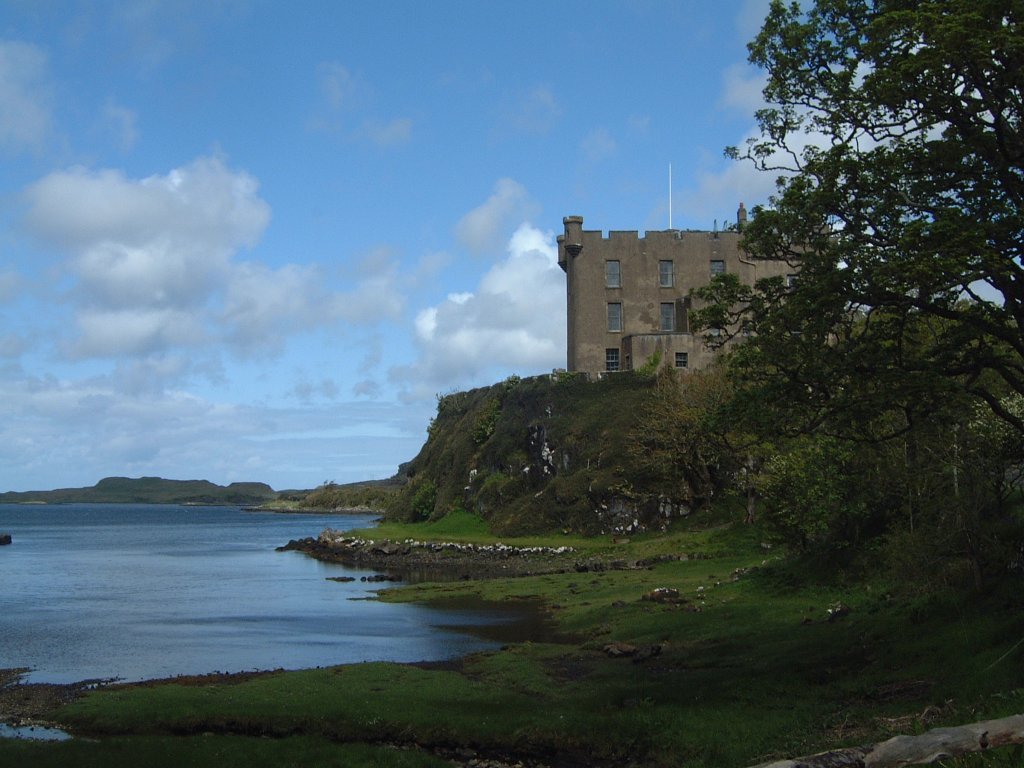
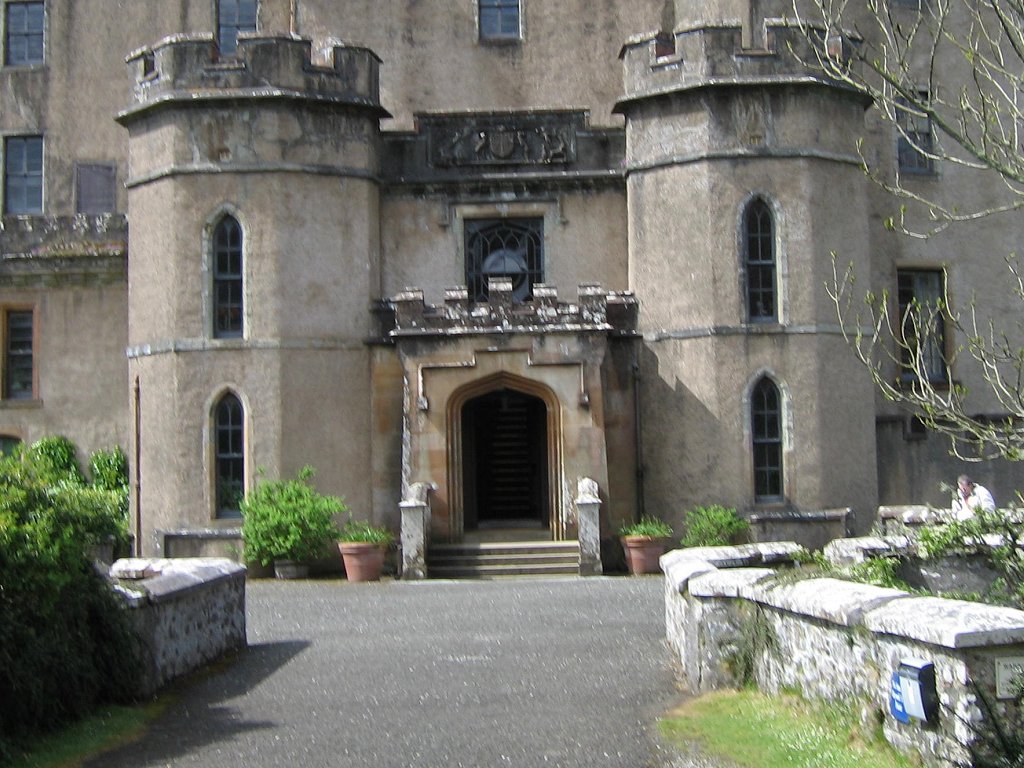

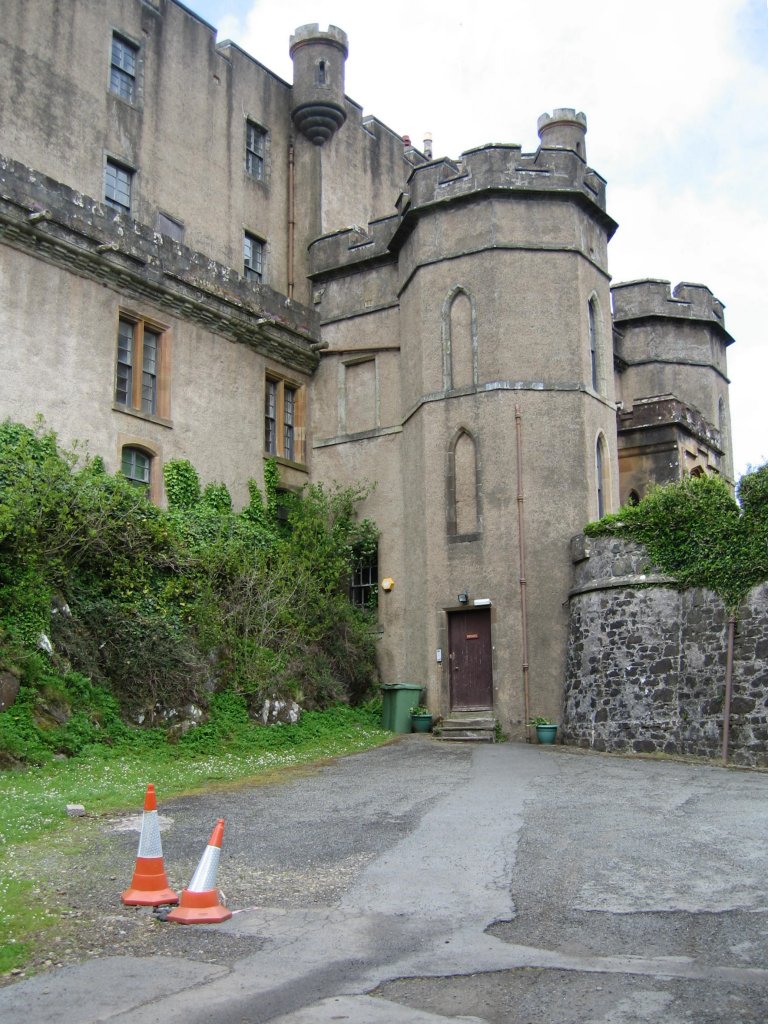

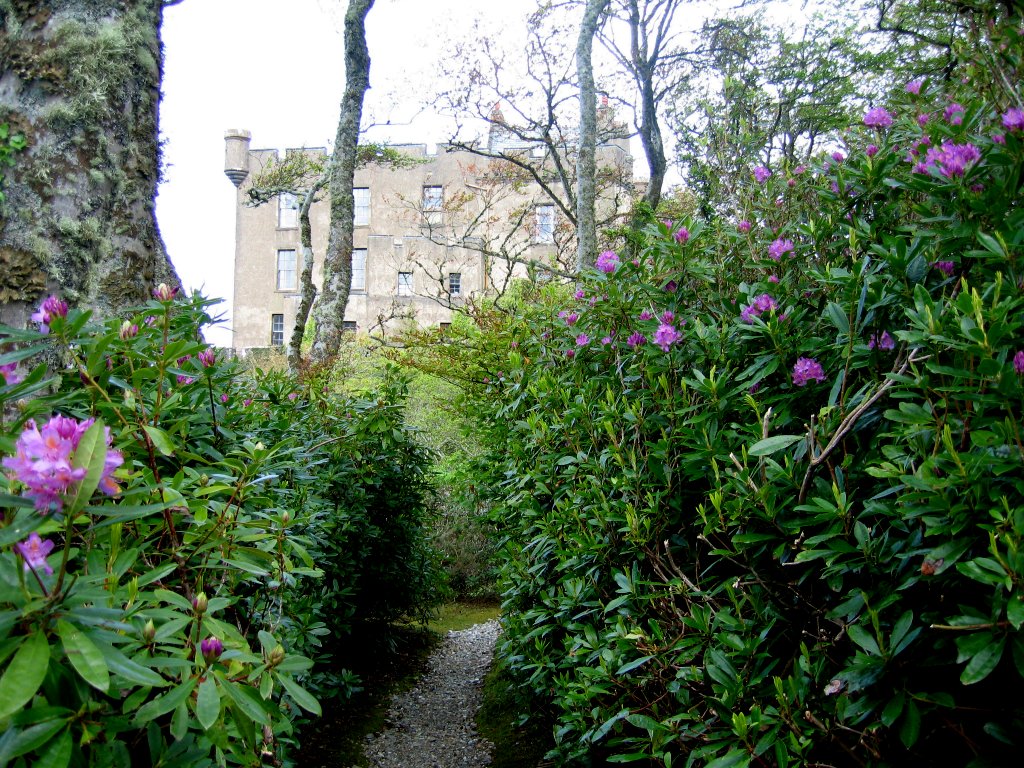

The garden consists of three main areas. There is a
water garden with a fine natural waterfall from which a burn runs through the garden to the sea below the castle. The
round garden has a central circular bed like a wheel with the spokes of the wheel delineated by small box hedges and also contains a large Monkey Puzzle (Aurucaria aurucaria). The
walled garden was probably a kitchen garden, but it now has some fruit trees along the walls, a pond and a semi-circle of stone seats; it also features a rare Himalayan blue poppy. There are many rhododendrons throughout the spacious gardens.
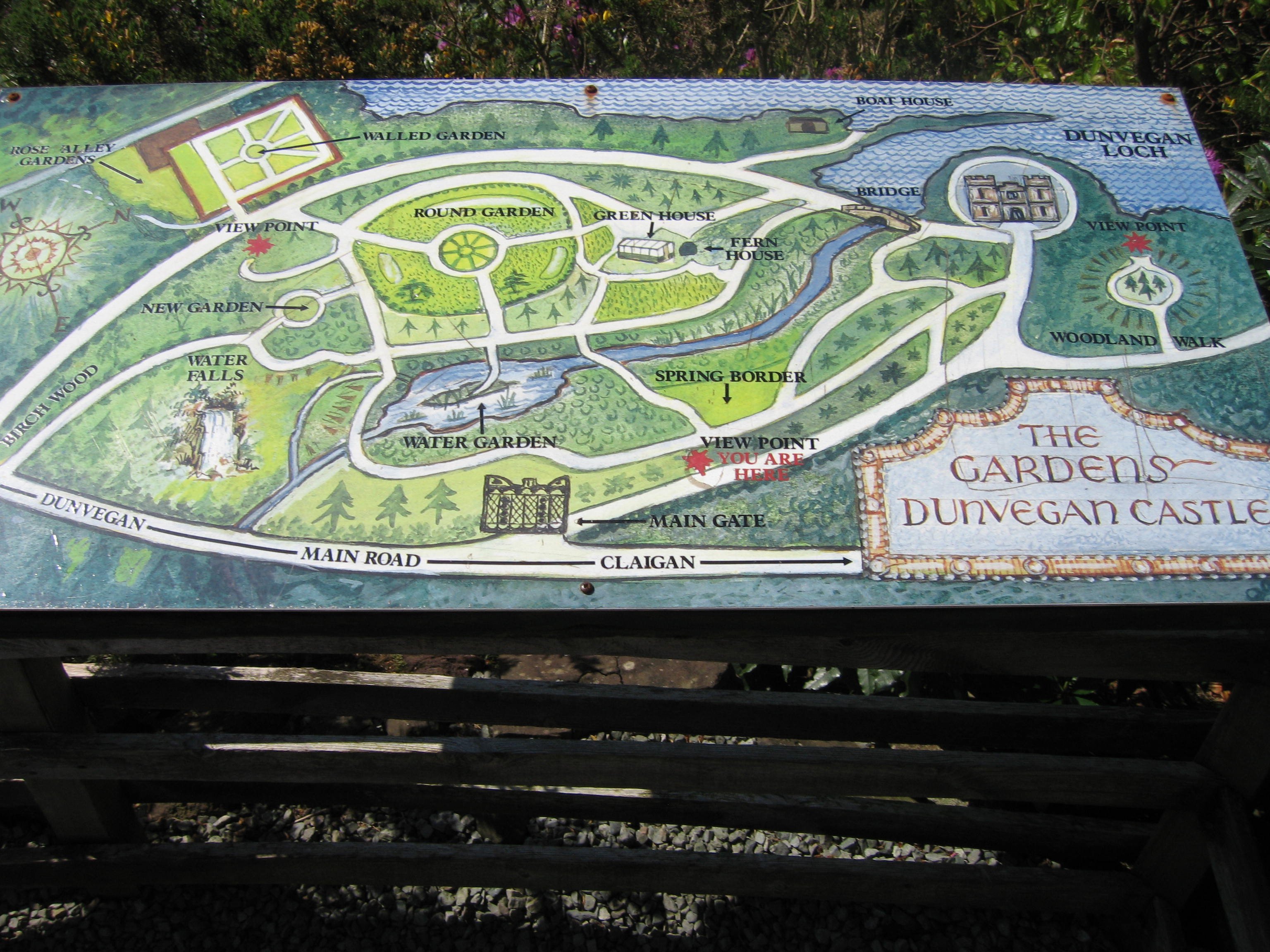

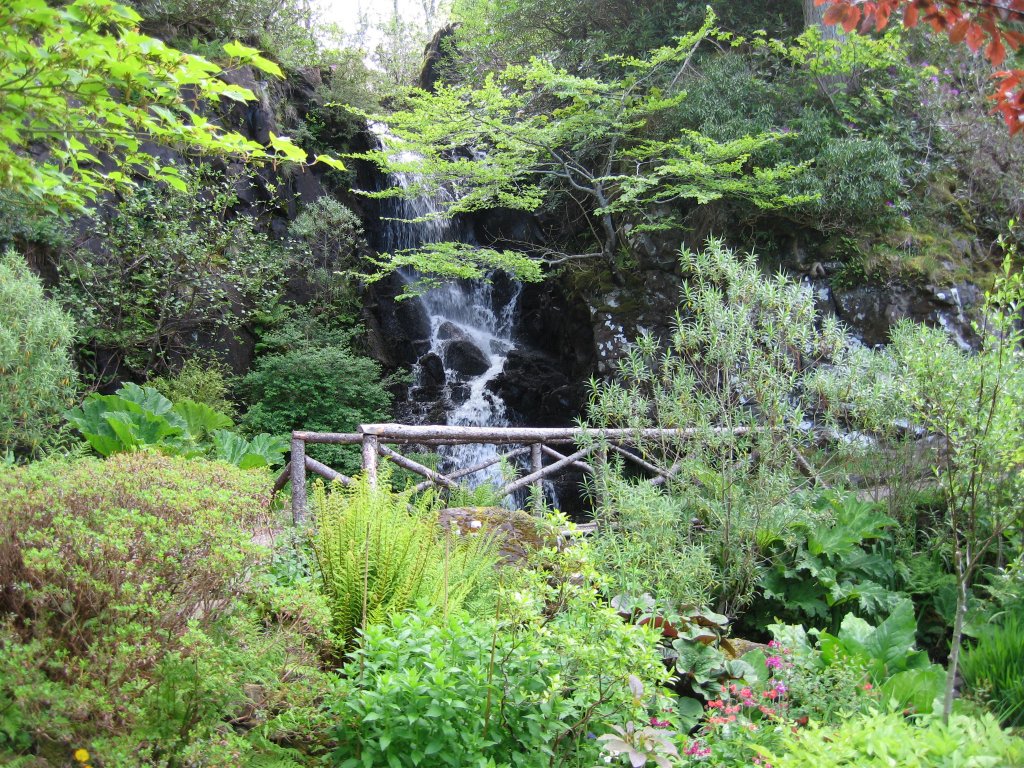

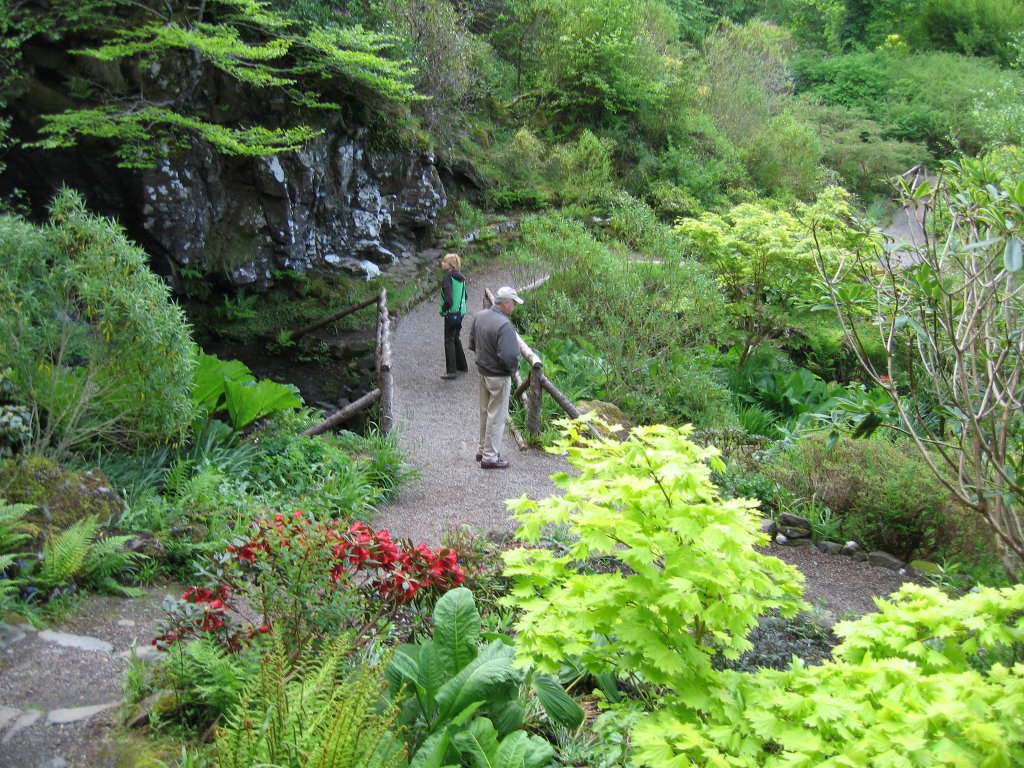
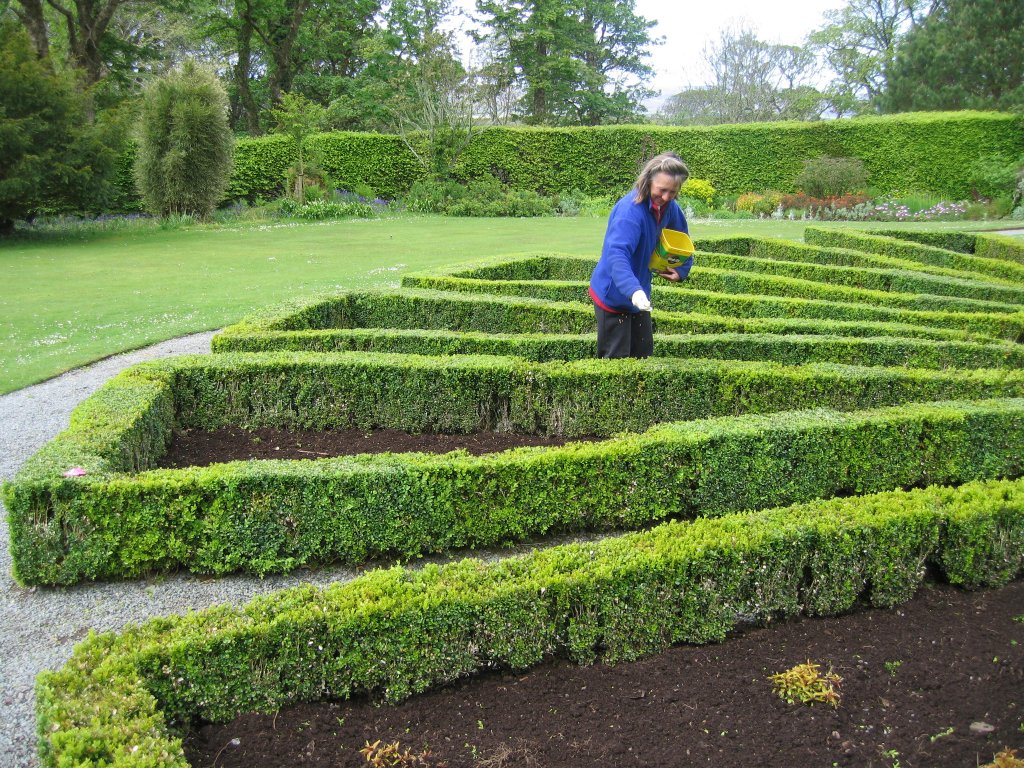

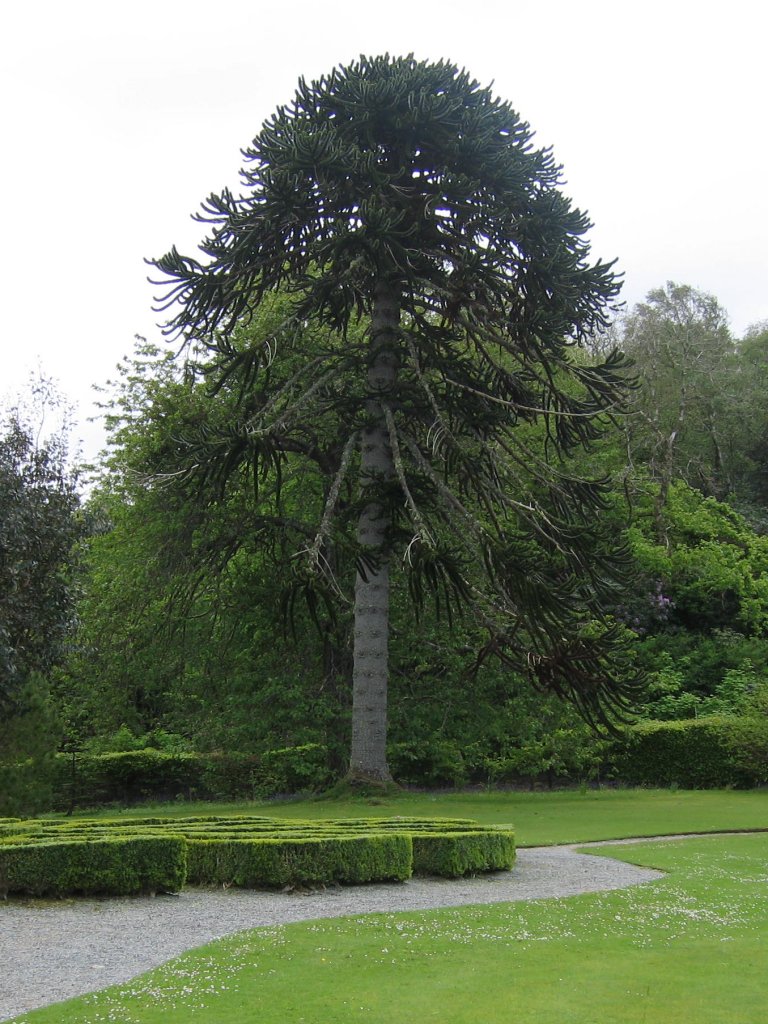

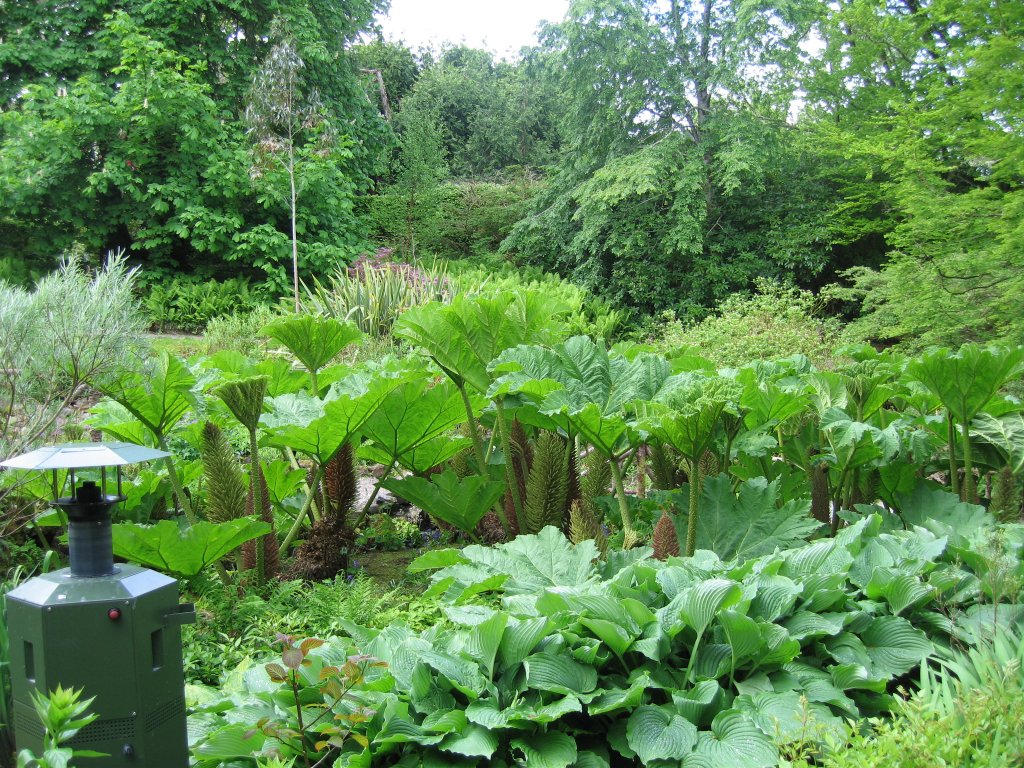
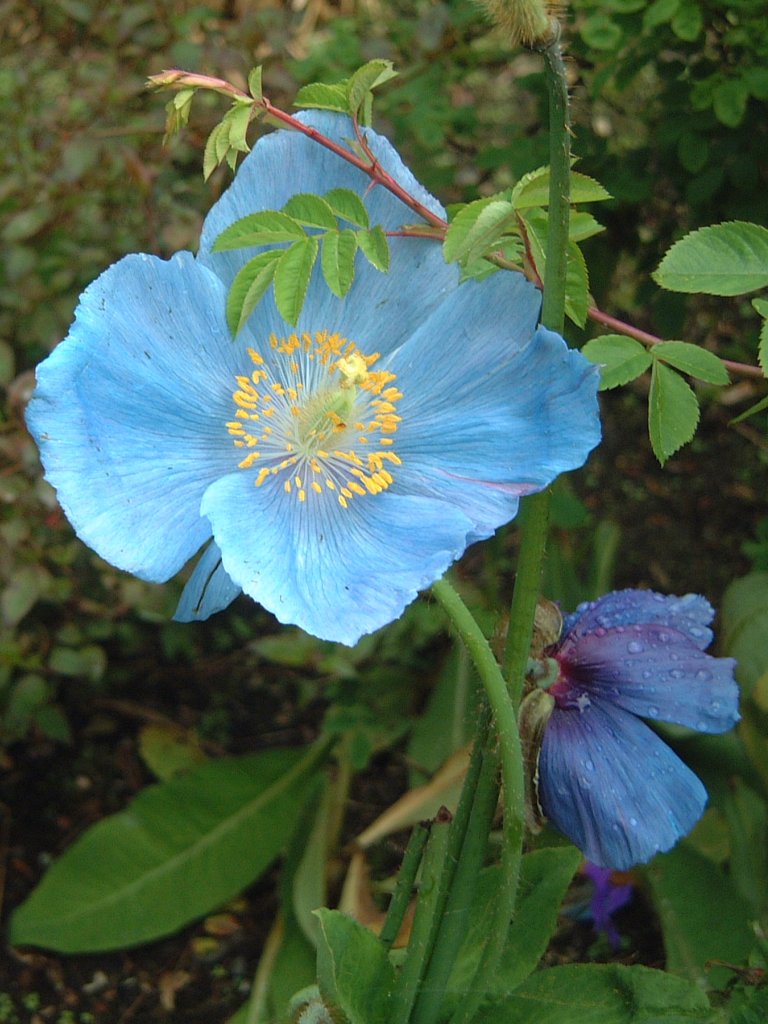
Here is an interesting excerpt from The Island Clans During Six Centuries - Chapter 1 by Reverend Canon R.C.MacLeod (1920's) . . .
"The language of the Highlanders at first sight seems to be purely Celtic, and, if this were really the case, it might be argued - Gaelic being the language of the people - that no Norse conquest of the country had ever taken place at all. But the Norse influence on the Gaelic language has really been very strong. In his Norse Influence in Celtic Scotland, Dr Henderson gives a list of several hundred Gaelic words which are derived from the Norse. Many of the surnames still borne by Highlanders are Norse. MacLeod, MacCaskill, Maclvor, Macaulay, Gunn, Tolmie, McCrailt. are a few instances out of many which might be named. A large number of the Christian names which occur in West Highland history, some of which are still borne by living Highlanders, are Norse names. Tormod, anglicized to Norman, is the Norse Thor-modhr, Thor minded; Torquil is the Norse Thorkill, Thor's kettle; Godfrey, the Norse Gudrod; Reginald is the Norse Rognvaldr, Ruler from the Gods; Ronald is another form of the same name. Somerled is a Norse name meaning "the summer sailor," that is, the Viking who went on ravaging expeditions in summer.
Here again many other instances could be given. But it is in the place-names all over the Islands that the Norse influence has been strongest. In Lewis and Harris three-fourths of the important place-names are Norse, in Skye a very large proportion. All the place-names terminating in bost, nish, and a, ay, or ey are Norse, "bost" meaning a township or stead, "nes" meaning a point or promonotory, "ey"meaning an island. As most Highlanders know, these are very common terminations. Indeed, ninety per cent. of the Islands have names terminating in some form of the Norse "ey." Many other places are known by Norwegian names. Uig is the Norse "Vik," a bay, from which comes the word Viking; Sleat or Slate in Skye is the Norse "Sletta," a plain; Staffa and Staffin are both derived from the Norse. Staffa means a staff, or rod, to which their basaltic rocks bear a resemblance. Uist is the Norse Ivist, a habitation. Eriscay is Eric's island, Barra is Barr's island, Barr being a contraction of St Find-barr, a saint whose day was kept on September 25th. Though Mull has retained its pre-Norse name, half the place-names in the island are of Norse origin. Jura is pure Norse, and means deer's isle. [For further details on this subject I refer the reader to Dr Henderson's valuable book on " Norse Influence in Celtic Scotland."]
Some names which seem to be Gaelic may possibly be really Norwegian. Such a one is Dunvegan. It appears at first sight to be Gaelic, dun bheagan, "the little dun," but it may really be "Bekan's Dun." There is a place in Iceland called Bekansstad, and it is possible that this Bekan may have been one of the sturdy pagans who left the Hebrides and went to Iceland, because they were disgusted at finding themselves surrounded by people who had embraced Christianity."
Please use the BACK button of your browser to return.